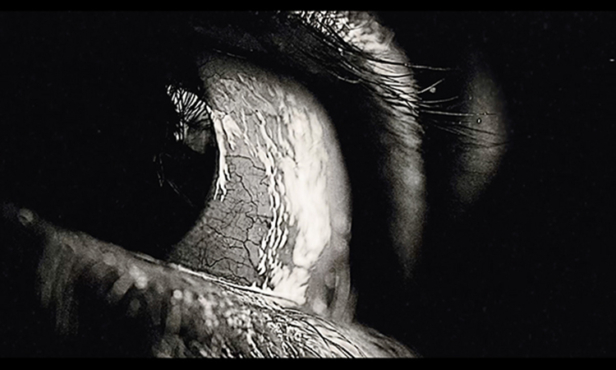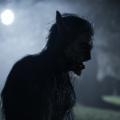J-Horror typically features alienated individuals and viral curses, and uses technology – whether outgoing and analogue, like hand-me-down VHS cassettes, or incoming and digital, like the internet – as the medium for its uncanny hauntings.
As its very title implies, the key thesis of Sarah Appleton and Jasper Sharp’s documentary The J-Horror Virus is that this distinctive form of Japanese ghost movie, emerging around the turn of the millennium, spread through not only Japan’s film culture, but the world’s, like one of those infectious, self-replicating viruses that so often propel its narratives, and that leave their sinister trace everywhere even as they mutate.
Of course, every pandemic has its index case, its patient zero, its epicentre – and for this genre, it is Hideo Nakata’s Ring (1998), placed literally at the film’s centre. Yet if, both in its title and in its central image of the round entrance to a deep, dark well, Ring foregrounds absence – like the hole in a donut – capturing the emptiness of its characters’ lives and of their last-ditch efforts to go on living, then there is also a conspicuous absence in The J-Horror Virus. For while an impressive array of J-horror directors appears in the film, including Teruyoshi Ishii (Psychic Vision), Kiyoshi Kurosawa (Sweet Home; Cure; Pulse), Norio Tsuruta (Scary True Stories, Ring 0), Joji Iida (Spiral, 1999), Takashi Shimizu (Ju-on: The Grudge; Marebito), and while comments are solicited in the discussion of Ring from its screenwriter Hiroshi Takahashi and actress Rie Ino’o (who played Sadako), Nakata himself, who is the director of Ring – and of my favourite J-horror Dark Water (2002) – is notably absent, even if his influence, like that of a ghost, can still be felt.
Perhaps, though, there is a point, besides no doubt the pragmatics of his unavailability, to Nakata’s absence. For even if The J-Horror Virus correctly privileges Ring – now sequelised, satirised and remade – as the film that put J-Horror on the international map and economically established for a broader audience what were coming to be the tropes of this new genre, Appleton and Sharp are just as interested in the periphery of J-horror, its antecedents and afterlife.
With help from the filmmakers, as well as scholarly commentary from Lindsay Nelson, Tom Mes and Sharp himself, the film traces the traditional iconography of the vengeful female spirit, with characteristic white robes and long black hair, right back to classic kaidan (ghost stories) or kabuki plays like Yotsuya Ghost Story, The Peony Lantern or The House of Broken Plates.
Meanwhile, the revolutionary shift to a modern setting, to a haunted tape reel, and to ghosts that just stand in the background of ordinary daylit settings, goes back to the mockumentary video Psychic Vision (1988) and was developed further by Scary True Stories (1991), whlle Tsuruta’s influential Super Horror Experience 4: Psychic Video (1995) featured a haunted video. Meanwhile, the Haunted School television miniseries took J-horror conventions from V-cinema to the much broader audience of television, popularising the genre and giving rise to the term ‘J-horror’, as well as spawning a series of adapted theatrical versions.
Another popular made-for-television J-horror was Joji Iida’s feature-length Ring: Kanzenban (1995), screened three years before Nakata and Takahashi would adapt the same source novel into Ring, and one year before Nakata would direct the first theatrical J-horror Don’t Look Up (1996) – and then there is the odd excellent outlier like Cure (1997), not quite J-horror but certainly drawing on the genre’s imagery and alienating vibe. Takashi Miike’s Audition (1999), released a year after Ring came out, similarly strikes its own tortu(r)ous path.
Still much J-horror that comes out after Ring is in its shadow while chasing its success. A string of J-horror remakes – Gore Verbinksi’s The Ring (2002), Takashi Shimizu’s The Grudge (2004), Walter Salles’ Dark Water (2005), Jim Sonzero’s Pulse (2006) and Eric Vallette’s One Missed Call (2008) – all convert their Japanese models into American horror idioms, while their excess exposition and more aggressive ghosts ensure that the subtlety and irrationality of the originals become lost in translation (something which The Grudge, with its Americans disoriented and doomed in Tokyo, literalises). Being able to see these film side by side exposes national difference, while highlighting what makes the Japanese films so special. Yet J-Horror has become a globalised phenomenon, its motifs and mannerisms, its spooks and sensibilities, now a recognisable feature of horror cinema the world over.
“The J-Horror film genre could be made in any country,” Kurosawa observes, “I think that is the greatest significance of J-Horror.” With their team of articulate interlocutors, Appleton and Sharp tap into, and tease apart, just what it is about this expanding body of films that is both so culturally specific, and so universally appealing.
The J-Horror Virus has its world première on Friday 25th August at FrightFest 2023. Read more reviews at SciFiNow.




